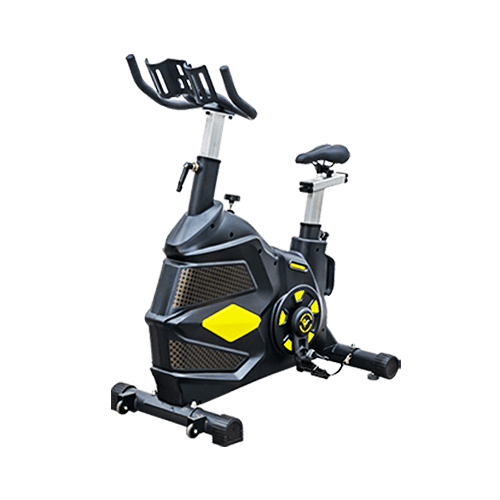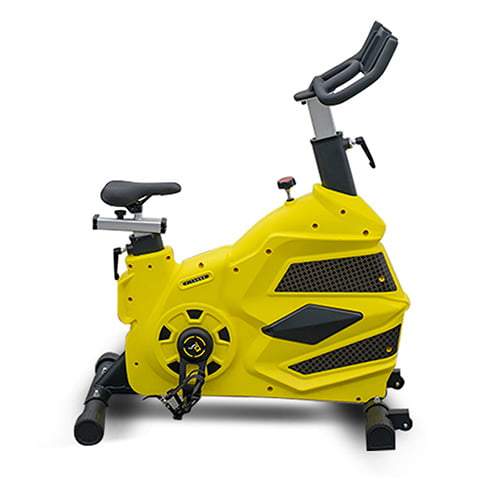Introduction

In recent years, spinner exercise bikes hav emerged as indispensable tools in fitness regimens worldwide. These stationary bikes offer a versatile and efficient way to improve cardiovascular health, build muscular strength, and aid in weight management. This blog delves into the multifaceted benefits of integrating a spinner exercise bike into your workout routine.
Cardiovascular Health
Improved Heart Health
Increased Cardiovascular Endurance: Regular sessions on a spinner exercise bike elevate heart rate, strengthening the heart muscle and enhancing overall cardiovascular endurance.
Lower Blood Pressure: Consistent aerobic exercise, such as cycling, contributes to lowering blood pressure levels over time, reducing the risk of heart disease.
Enhanced Stamina and Endurance
Extended Workout Durations: Gradually increasing resistance levels and duration on the spinner bike improves stamina, allowing for longer and more intense workouts.
Quicker Recovery: Improved circulation and oxygen delivery to muscles facilitate faster recovery post-exercise, supporting consistent training schedules.
Weight Management
Calorie Burning
Effective Calorie Expenditure: Cycling on a spinner bike can burn a significant number of calories per session, depending on intensity and duration.
Supports Weight Loss Goals: Incorporating spinner bike workouts into a comprehensive fitness plan helps create a calorie deficit conducive to weight loss and maintenance.
Muscular Strength and Toning
Leg Muscle Development
Targeted Muscle Groups: Spinner bikes engage major leg muscles, including quadriceps, hamstrings, and calves, promoting strength and endurance in these areas.
Enhanced Lower Body Tone: Regular cycling sessions contribute to toned and defined leg muscles, enhancing overall lower body aesthetics and functional strength.
Core and Upper Body Engagement
Core Activation: Maintaining proper posture and engaging abdominal muscles during cycling strengthens the core, improving stability and balance.
Upper Body Conditioning: Gripping the handlebars and adjusting resistance levels engage muscles in the arms, shoulders, and back, contributing to overall upper body strength and toning.
Sample Workout Routine Using a Spinner Exercise Bike
| Day | Workout Focus | Duration | Intensity | Notes |
|---|---|---|---|---|
| Monday | Cardio Endurance | 45 minutes | Moderate | Focus on steady pace and breathing |
| Tuesday | Interval Training | 30 minutes | High | Alternate between high and low intensity intervals |
| Wednesday | Lower Body Strength | 40 minutes | Medium-High | Increase resistance for leg muscle activation |
| Thursday | Active Recovery | 20 minutes | Low | Gentle pedaling to aid in muscle recovery |
| Friday | Total Body Workout | 50 minutes | Medium | Incorporate upper body and core exercises while cycling |
| Saturday | Hill Climbing Simulation | 60 minutes | High | Mimic uphill cycling for endurance and strength |
| Sunday | Rest and Stretching | – | – | Focus on flexibility and relaxation |
Low-Impact Exercise Option
Joint-Friendly
Reduced Impact: Spinner bikes provide a low-impact workout, minimizing stress on joints compared to activities like running or aerobics.
Ideal for Rehabilitation: Suitable for individuals with joint issues or those recovering from injuries, spinner bikes offer a safe and effective means to maintain cardiovascular fitness and muscular strength.
Convenience and Accessibility

Home Fitness Solution
Space-Efficient Design: Compact and often foldable, spinner bikes are ideal for home use, fitting into smaller spaces and allowing for convenient storage.
24/7 Accessibility: With a spinner bike at home, users can exercise at any time, eliminating the need for travel to a gym and accommodating diverse schedules.
Conclusion
In conclusion, the spinner exercise bike proves to be a valuable addition to any fitness routine, offering a range of benefits from cardiovascular health enhancement and weight management to muscular strength development and joint-friendly exercise. Whether you are a beginner looking to improve overall fitness or a seasoned athlete aiming to diversify your training, the spinner bike provides a versatile and efficient workout solution.
FAQ
Q:What is a spinner exercise bike, and how does it differ from a traditional stationary bike?
A:A spinner exercise bike is a type of stationary bike designed specifically for indoor cycling workouts. It typically features a heavier flywheel for smoother pedaling and often allows for more adjustable resistance levels compared to traditional stationary bikes.
Q:How often should I use a spinner exercise bike to see noticeable improvements in fitness?
A:For noticeable improvements in cardiovascular endurance and muscle strength, aim for at least 3-4 sessions per week, with each session lasting 30-60 minutes. Consistency and progressive intensity are key to seeing results.
Q:Can spinner bikes be adjusted for different fitness levels and goals?
A:Yes, spinner bikes usually offer adjustable resistance levels and seat heights to accommodate different fitness levels and goals. Beginners can start with lower resistance and shorter durations, gradually increasing both as fitness improves.



